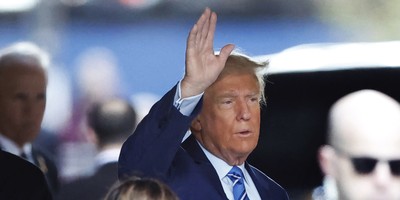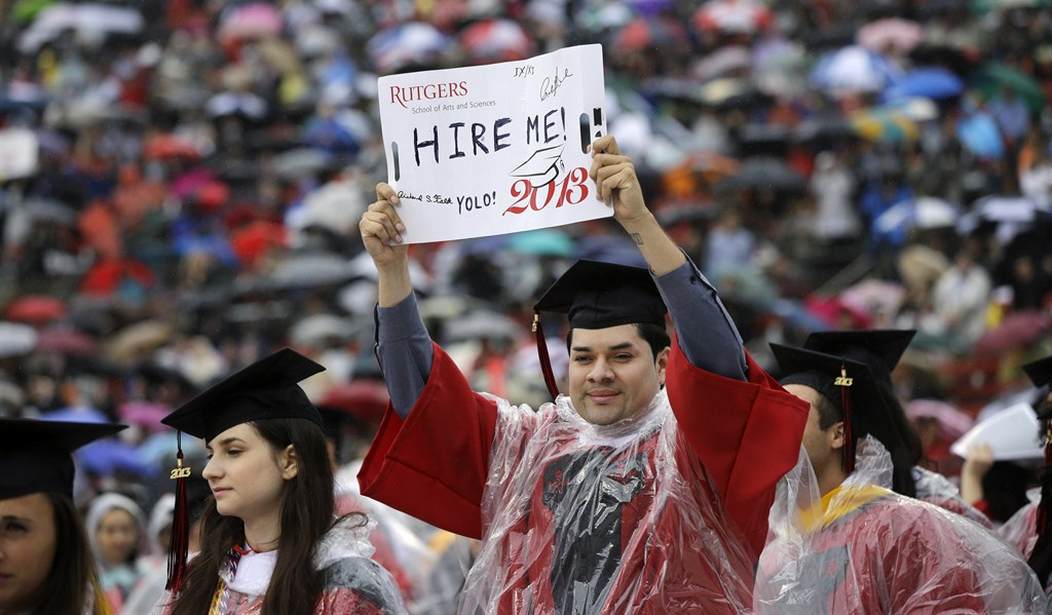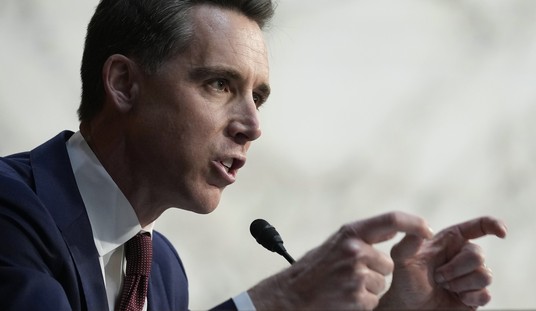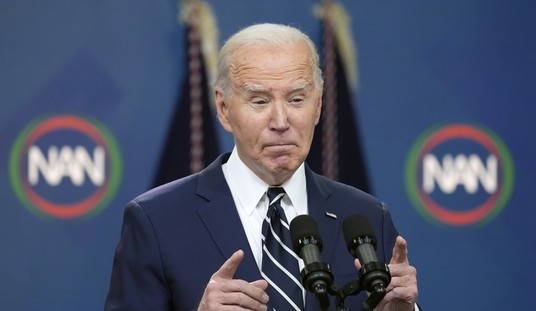In his first address to Congress after being sworn in as President of the United States, President Obama laid out an aggressive progressive agenda for increasing the number of Americans with college degrees over the next ten years. "We will provide the support necessary for you to complete college and meet a new goal," he promised Americans, "by 2020, America will once again have the highest proportion of college graduates in the world."
President Obama's goal here completely misdiagnoses what ails our higher education system. A culture that encourages and a government that and subsidizes higher education has driven up costs, pushed underqualified students into institutions that they’re not ready for, propped up a student debt bubble and hurt the quality of our higher educational institutions.
THE MARGINAL STUDENT
What’s odd about the President’s agenda is that he recognizes some of these problems. In that same 2009 speech to Congress, he acknowledged that “we have one of the highest high school dropout rates of any industrialized nation. And half of the students who begin college never finish.”
Modern American postsecondary education is thought of as a “bundled” model: everything comes included and nothing is severable: professors, brick-and-mortar buildings, books, testing, certification and so on. But in an economy where so many recent graduates are saddled with student debt and can’t find jobs with the skills they’ve acquired, it might be time to rethink the way the system works for everyone.
Traditional bundled models of higher education – this includes both two- and four-year programs - will be beneficial to the students who are prepared for the academic rigor and willing to make financial plans in order to not overstretch themselves. What’s important is academic preparedness and choosing a course of study, including the level of degree, that is right for a student. The bundled model isn’t for everyone, and it’s increasingly not for the students who are borderline college applicants.
The Census Bureau’s 2011 survey found that the median bachelor’s degree recipient will earn 85% more over the course of their careers than the median high school graduate. Associate’s degree holders will earn 38% more. These figures vary by course of study - engineers benefit from the greatest wage premium, while those who studied humanities or other liberal arts benefit the least - but the benefits are nonetheless there.
Government policy isn’t encouraging more average postsecondary candidates to go to college, though. Those students would likely go on their own. Government policy encourages the marginal students, those who might not be eligible for merit-based scholarships, or might stretch themselves to fit in at a school beyond their academic reach. It’s creating a generation of tragedy.
Recommended
An average four-year college graduate from the class of 1993 would graduate with $9,450 in student loan debt. The average bachelor’s recipient in 2012 graduated with $29,400 in debt - an increase of over 300%, according to the Institute for College Access and Success. What’s worse are those who drop-out of college with high debt burdens; they don’t get the benefit of the college wage premium and are still saddled with massive debt that came along with their attempt at a college degree.
"It's tragic," says Corie Whalen, spokesperson for free market youth advocacy group Generation Opportunity. “You have these 18-year-olds who don’t know what they want to do, so they go to school. I’m 26, and I have a lot of friends, people my age and slightly younger, who end up dropping out of school, maybe to take a job. ... They’re in this kind of black hole where they’re stuck.”
A 2005 study from the National Center for Public Policy and Higher Education found that 20 percent of all students who borrow to go to college are unable to complete their degree, and the median college dropout had incurred $10,000 in student loans, with nothing to show for it. The study found that a quarter of debt-saddled college dropouts would default on their loans.
NOT EVERY JOB NEEDS A COLLEGE DEGREE
In the post-2008 crash economy, jobs are increasingly becoming available that require training other than a traditional four-year college education. While two-thirds of young Americans enroll in traditional colleges, the Bureau of Labor Statistics reported in 2012 that only one-third of jobs in the American economy require postsecondary education.
Moreover, BLS found, “The most new jobs from 2012 to 2022 are projected to be in occupations that typically can be entered with a high school diploma. ... Apprenticeship occupations are projected to grow the fastest during the 2012-2022 decade.”
According to the U.S. Census Bureau, more than half of graduates who have bachelor’s degrees in communications, liberal arts, and business go on to jobs in which a bachelor’s degree is not required.
With a glut of jobs that don’t require a degree, the perils that befall debt-addled dropouts who have overstretched themselves to go, and the ever-rising cost of attending college, why are people enrolling in four-year colleges at record rates?
The answer: government policy. American government at all levels subsidizes higher education more than any other country, and our culture, including our political leaders, portray a traditional college education as mandatory for success in life.
INFLATING THE HIGHER EDUCATION BUBBLE
“We know it’s harder to find a job today without some higher education,” President Obama said in December 2013, “so we’ve helped more students go to college with grants and loans that go farther than before. We’ve made it more practical to repay those loans. And today, more students are graduating from college than ever before.”
Sadly, in an era of unprecedented dropout rates, skyrocketing tuition, and mounting debt burdens, President Obama wants more people going to college.
The role that government policy has played in sending more people to college is undeniable. Rather than focus on fixing our K-12 education system to better prepare those students who complete high school but are unprepared for college, policies have pushed more high school grads into schools that they’re academically incapable of handling at prices they can’t afford, leading to our current dropout and debt predicament.
The number of incentives used by the federal government to push students toward college continue to increase. There’s the Stafford Loan program run by the federal government that helps students pay for college, and which has been used time and again for political gamesmanship, as seen in the 2013 debate over keeping interest rates on those loans artificially low. There’s the Pell Grant program, a college financing mechanism provided by the federal government that does not have to be repaid and for which total spending has doubled under President Obama. And that’s not to mention tax deductions run by the IRS for everything from tuition to books to student loan interest.
David Wilezol, fellow at the Claremont Institute, says there are important reforms to be made to the method of federal financing of higher education that can vastly improve educational outcomes. “It would be good to put some harder standards in place to get loans and also, to look at what the student is studying,” Wilezol tells Townhall. “There’s going to be a higher return on investment and a better salary if you’re in computer science or chemistry than if you’re in sociology or English… I don’t think it’s wise for the country to subsidize humanities or social science disciplines as heavily as they’ve done.”
Some of these programs are, on net, good policy. There are a lot of students who should be going to college and do need the help. The sum total of the federal government’s intervention in higher education, however, is to encourage too many students to go to college and to subsidize the massive tuition increases we’ve seen.
COMMUNITY COLLEGE ISN’T CHEAP
Four-year colleges are the easiest culprit to point to here, and Obama has pushed for increased utilization of community colleges and associates’ programs to alleviate the crisis in higher education. Andrew Kelly, director of the Center on Higher Education Reform at the American Enterprise Institute, tells Townhall that’s not the right policy solution.
“One of the things you usually hear in this debate is that community colleges are a better option because they’re cheaper, which they almost always are, to the consumer, out-of-pocket… But the completion rates at those colleges are often very low. It’s cheap to the consumer but it’s really expensive to the taxpayer on a per-outcome basis.”
Community colleges are often seen as an easy alternative to traditional four-year bachelor’s programs because, in addition to being cheaper, there’s already an infrastructure built outside of the traditional four-year program. The argument goes that all we need is a cultural shift to push two-year programs into respectability to make them a cheap, viable higher education alternative.
Kelly disagrees with that. “The problem with community colleges is that, simply, their outcomes up to now are far from where we need them to be if we want to have an efficient system of human capital for those types of students that would be better served in two-year programs.” Community colleges aren’t the targeted programs they should be.
Like bachelor’s programs, many community colleges encourage experimentation from students, allowing them to spend time taking broad-based courses that don’t contribute a whole lot to their educational goals. “There’s an emerging thinking,” Kelly says, “that students in the two-year sector need more structured programs that give them a starting point, an endpoint, and a clear mapping from where you start to where you finish.”
THE HIGHER ED CARTEL
Many of the failures of America’s higher education system stem from the belief in the all-inclusive bundled model. It’s clear that in America’s economy, both now and the near future, the bundled model of higher education isn’t necessarily the one that will best serve new workers. Unfortunately, we’re moving at a glacial pace toward accepting the kinds of higher education reform that we need and government has been loathe to disincentivize the traditional model.
Accreditation is overseen by the U.S. Department of Education, which bestows private agencies with the authority to accredit either institutional or specialized categories to schools or programs, respectively. The private accrediting agencies have standards for accreditation which have been approved by the DoE for what it takes to become an accredited program.
The lure of accreditation for higher ed institutions is access to financial aid. A program has to be accredited to receive any form of federal financial aid, both for the school itself and the students. While the accreditation process wasn’t invented to serve as a gatekeeper to financial aid, in the modern higher ed system that’s what accreditation really is.
BRING ON THE COMPETITION
What accreditation does is create a high barrier to entry for innovative methods of higher education that incumbent schools are desperate to protect. We think of postsecondary schools as public-good nonprofits that care only for the best for their students, but they’re businesses like any other and they want to protect their favored status. The Center for Responsive Politics found that education lobbying in Washington, D.C. has topped $100 million in three of the past four years, with millions spent by big school systems like the University of Texas and the University of California alone. As a result, the bundled model is just about the only one on offer for students who can’t pay their own way.
Accreditation was never meant to be the main way that the government would decide which schools students would be incentivized to attend. A reform of the accreditation system might allow a wider variety of education systems to address what American students need. Accreditation, of some form or another, wouldn’t necessarily go away. It would merely give new, innovative education startups the chance to compete for the same higher-ed taxpayer dollars that currently are monopolized by bundlededucation providers.
What the higher education system might need is a good dose of the free market. The incentives are all aligned to send students to traditional educational models that are failing both students and taxpayers. It’s the approach that scholars like AEI’s Kelly emphasize. “If you’re a higher education provider and you have some early outcomes to suggest that students are well served, and you are inexpensive and students can afford to pay with a little help from federal or state governments. Why shouldn’t we embrace that?
“Let the students decide where they want to invest their time and money.”
Small reforms have already begun to push the higher education system toward innovation. Under the Bush administration, accreditation reform, for the first time, allowed the possibility for programs that offered the majority of their courses online to become accredited. It’s why we’ve seen the rise of programs like Strayer University and Western Governors University. These are majority-online, but they also move away from the traditional model of providing credit merely for time invested.
The innovative move in higher education right now is away from credit-hours and toward skills testing. In addition to accredited institutions like Western Governors University, Kelly points to programs like Degreed and Accredible that allow students to gather a sum total of their schooling, their training, and their learned skills to fuse into a comprehensive package, which Degreed calls “Degree Equivalents,” that provide an alternative method to the certificates awarded by bundled postsecondary education.
LET NEW SYSTEMS EMERGE
The higher education models that best serve students may also not exist yet. The beauty of opening up the higher education system to competition and choice is that forms of study may arise that would never be thought up by technocratic education gatekeepers. To an extent, this would be opening up the criticism that taxpayer dollars would be spent on education experiments that might not actually serve individual students as well as the current bundled model does. The status quo, though, is completely failing the students that are most vulnerable.
Millions of students push themselves to the limit every year to take on debt to attend academically intense college programs. For some of them, the current system serves them well. Even so, there are hundreds of thousands of young Americans who have become victims of the college-or-bust mindset, dropping out with mountains of debt and nothing to show for it. Many who complete college will find themselves with a humanities degree that they were promised would open up a world of opportunity, only to find themselves in the unemployment line because the skills they learned in a liberal arts college don’t fit with the jobs that America can provide today.
There may not be any silver bullet to solve the problems that overextended students and college debt pose to America’s youth today. But they deserve better. And Washington politicians ought to tell them the truth and take action on the policy options that could do real good in reforming the status quo.

























Join the conversation as a VIP Member